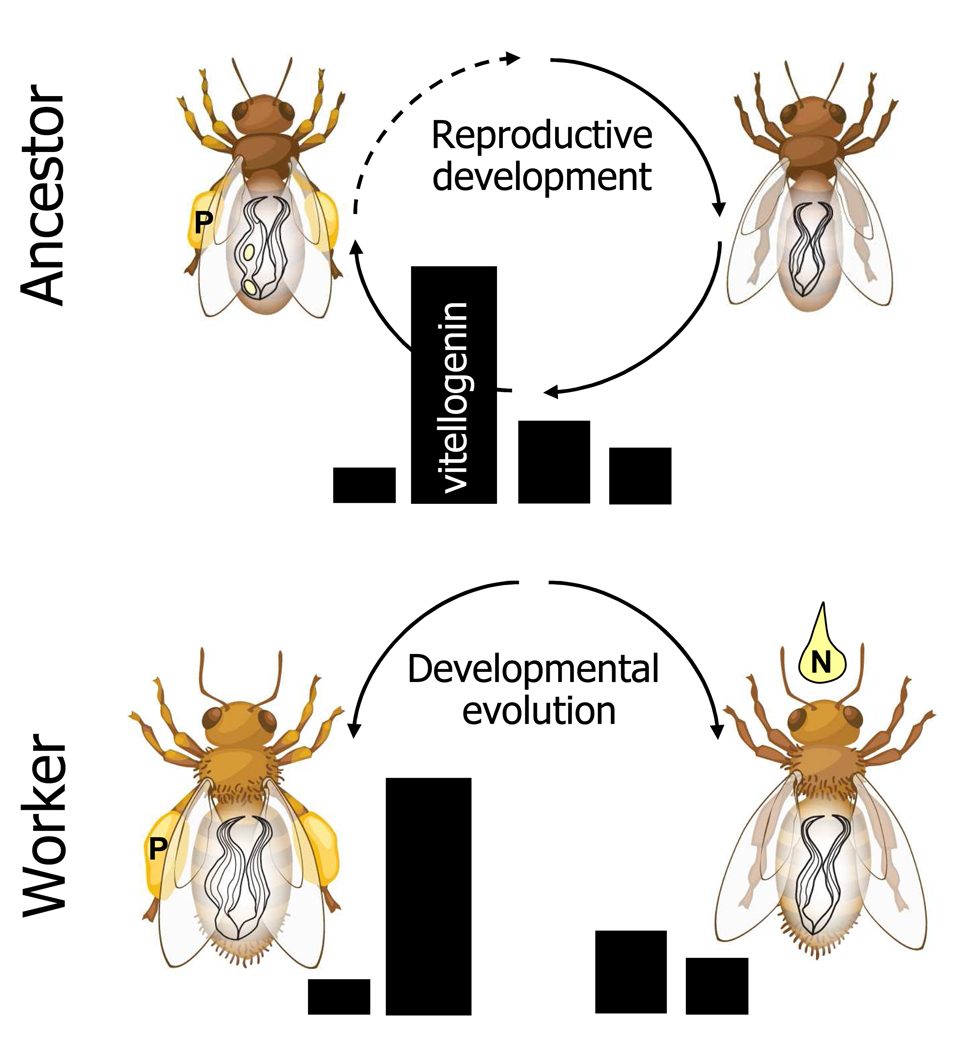Figure 2.
The reproductive ground plan hypothesis (RGPH) outlines how female reproductive biology may have been co-opted in the division of labour between foraging worker honeybees. Top panel: in ancestors of honeybees, the progression of reproductive development was linked to changes in female food-related behaviour. During periods of no active reproduction (top, right), the ovary was undeveloped (inactive, not enlarged with yolk) and the vitellogenin titre (black bars) was low. During reproduction, ovary activity and vitellogenin protein expression increased prior to oocyte yolk deposition, before vitellogenin returned to baseline (top, left), and only this maturational stage, or phase of the reproductive cycle, would be associated with pollen collection (‘P’) for nest provisioning of young. Below: similar to phenotypic aspects of the reproductive physiology of ancestors, high pollen-hoarding strain bees show rapid modulation (up–down) of vitellogenin (bottom, left), while low strain bees have more moderate, constant levels (bottom, right). The RGPH proposes that this differential physiology is linked via a pleiotropic gene network to the corresponding behaviour of the ancestor, explaining how pollen foraging is more prevalent in high strain workers compared to low strain bees. Full-line arrows in the top panel specify that reproduction perhaps was maturational in the ancestor (i.e. with one reproductive period). Dashed-line arrow indicates the alternative; a reproductive cycle that could be repeated.

